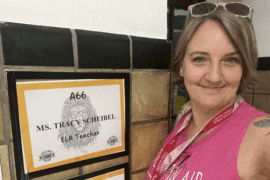Student Recommendations: A More Fun and Effective Approach
“She is undeniably brilliant as a student, but she has serious issues as a human being.” Before I became a teacher, I was an admissions counselor at my alma mater. It was midwinter two decades ago, and I was in week 12 of “reading season,” and my job was reviewing applications from December through March. When reading season first started, I agonized over every decision. I was weighed down by the knowledge that my circling “Accept,” “Wait List,” or “Reject” on the file could change the course of a young person’s life. But by week 12, I was a cold, heartless circling machine. In this moment, I was reviewing the application of a young lady from California who was top of her class with perfect SAT scores. And I was reading fast. If that quote had been buried deeper in her social studies teacher’s recommendation, I honestly may have skimmed right past it. This girl was a no-brainer. But more Lion than Scarecrow, she apparently also lacked a heart.
I tell you all this because recommendations have become a major time commitment of my fall semester. Don’t get me wrong. I love bragging on great kids. They deserve it and it’s a privilege to support them. But for the last few years, I’ve been teaching five junior level AP classes. By November, my recommendation queue can look like the line at the DMV on the 30th. And each recommendation, start to finish, takes a solid prep period. It’s possible to spend an entire month’s worth of preps just doing recommendations.
Not only is it time consuming, but in most cases the recommendation is of negligible value. Out of the thousands of applications I read, California Girl’s was the only instance in which the recommendation was the sole factor in changing our admissions decision. (And in case you’re wondering, we wait listed her and never heard from her again.) Because recommendations are both time consuming and of questionable value, the way I write recs is going to change next year.
The traditional approach to a recommendation is to provide a one-page overview of a student, both in and out of the classroom. Teachers solicit brag sheets and then typically write four or five paragraphs. We cover how we know the student, how s/he performed in our classroom, the extracurricular involvement, and perhaps we finish up with a few comments about his/her character or personality. Some teachers plug this information into a form letter, at least until a few Find and Replace snafus create embarrassing errors. Recommendations 1.0 is badly in need of an update. So, what can we do instead?
In his widely respected book and TED Talk, Simon Sinek implores people to “start with why.” Before you begin any endeavor, whether it is a journey or a letter, ask yourself about the rationale and desired outcome. Why do we write college recommendations? At first blush, one would answer, to support the student’s application to college. But too often, “support” means “repeat.” The traditional recommendation reiterates information that can be found elsewhere in the file. The reader already knows the student’s GPA, grade in your class, test scores and activities. So, what is the real reason we write recommendations?
The answer should be this: to provide insights and evidence about the student that provides depth and dimension to the rest of the file. This year, I’m deleting my template and I’m going to write stories. I’m going to figure out, with their input, one or two strengths of each student I recommend. And then I’m going to write a “letter” recounting anecdotes about the student that exemplifies those traits. If the student is a borderline candidate, and goes to committee (our lingo for applicants we actually discussed as a team), I want the discussion to center on a story, not a statistic.
For example, let’s say Chloe has great grades and mediocre standardized test scores. Maybe that reflects grade inflation. Maybe Chloe relied on her classmates for her good marks, if you’re picking up what I’m putting down. But if I use my letter to relate a specific vignette that epitomizes Chloe’s work ethic and persistence, those objective measures come to life in a way that is favorable to Chloe’s chances.
I don’t know if my new approach is going to be appreciably faster. No matter. It will be more enjoyable to help tell the story of how a young person’s journey intersected mine, if only for a season: and how they did something good, and something memorable. Then maybe, just maybe, in an admissions office in the coming midwinter, my letter might make a difference.
Todd Curtis
Todd Curtis teaches AP social studies at Howell High School, and was recently named the 2018-19 Monmouth County Teacher of the Year. Connect with Todd @tcurt_hhs






